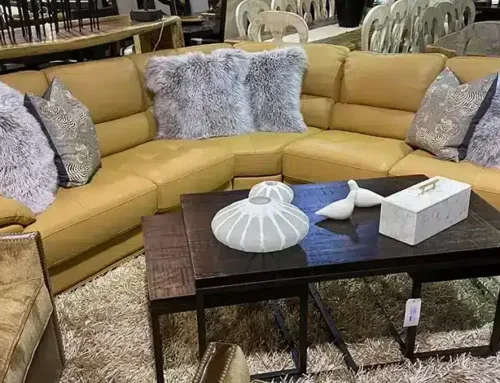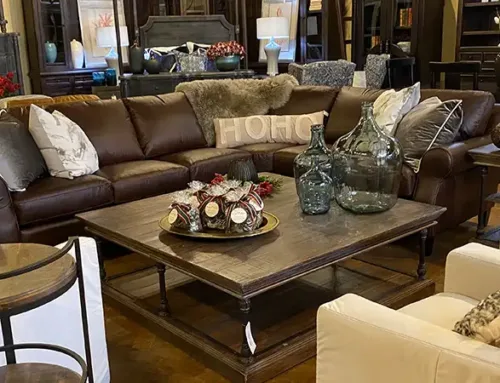Different Types of Lighting and How to Use Them in Your Home
Lighting can transform your home’s atmosphere and functionality. The right lighting can make a room feel cozy and inviting, or bright and invigorating. With so many options available, it can be challenging to know where to start. Explore these different types of lighting and how to use them in your home.
Ambient Lighting
Ambient lighting is the primary source of illumination in a room. It provides a uniform level of light, setting the overall tone and allowing you to navigate a space safely. You can think of ambient lighting as the foundation of your lighting plan for the rest of your home.
How to Use Ambient Lighting
- Ceiling Fixtures: Chandeliers, pendant lights, and flush mounts are popular choices for living rooms, dining areas, and bedrooms.
- Recessed Lighting: Great for kitchens, bathrooms, and hallways, recessed lights offer a clean and modern look without cluttering the ceiling.
- Dimmers: Installing dimmers allows you to adjust the light intensity, creating a softer, more relaxed ambiance for evenings.
Task Lighting
Task lighting is all about functionality. It’s focused lighting that helps you perform specific tasks like reading, cooking, or working. Unlike ambient lighting, which illuminates the entire room, task lighting is targeted and practical.
How to Use Task Lighting:
- Desk Lamps: Place these on workstations or study areas for focused light that helps reduce eye strain.
- Under-Cabinet Lighting: In the kitchen, under-cabinet lights provide direct illumination for chopping, cooking, and meal prep.
- Vanity Lights: In bathrooms, wall-mounted vanity lights on either side of the mirror illuminate shadows, making grooming tasks easier.
Accent Lighting
Accent lighting is used to draw attention to specific features or objects in your home. Artwork, architectural details, or indoor plants can all be highlighted with targeted lighting. This type of illumination adds drama and depth, turning ordinary objects into focal points.
How to Use Accent Lighting:
- Track Lighting: Ideal for galleries and living rooms, track lighting can be angled to highlight artwork or decorative items.
- Wall Sconces: Use sconces to accentuate fireplaces, bookcases, or textured walls.
- Uplights: Place uplights at the base of indoor plants or architectural elements like columns to create striking silhouettes.
Decorative Lighting
Decorative lighting serves a dual purpose — it provides illumination while also acting as an element of your decor. Think of this type of lighting as the jewelry of your home’s interior design.
How to Use Decorative Lighting:
- Chandeliers: A chandelier in the dining room or entryway makes a bold statement and sets the tone for the entire space.
- Pendant Lights: Use these over kitchen islands or clustered together in living rooms for a stylish, modern touch.
- Table Lamps: Decorative table lamps add character and personality to living rooms and bedrooms.
Natural Lighting
Natural lighting is any light that comes from the sun. It’s free, eco-friendly, and can drastically improve the mood and appearance of a room. Maximizing natural light not only makes your home feel more spacious, but also reduces the need for artificial lighting during the day.
How to Use Natural Lighting:
- Windows and Skylights: Keep windows clean and use sheer curtains to let in as much light as possible. Skylights are a great option for bringing daylight into dark spaces.
- Mirrors: Positioning mirrors opposite windows will help hardness the power of natural light by reflecting it back into a room, making it feel larger and brighter.
- Light Colors: Use light-colored walls and furniture to bounce light around the room, enhancing the effect of natural light.
Other Tips for Effective Lighting Design
- Layering: Combine ambient, task, and accent lighting to create a balanced and versatile lighting scheme.
- Color Temperature: Use warmer light (2700k-3000k) in living rooms and bedrooms for a cozy feel, and cooler light (4000k-5000k) in kitchens and workspaces for better visibility and focus.
- Lighting Zones: Divide large spaces into different lighting zones, giving you control of each specific area for more flexibility.
- Fixture Styles: Don’t be afraid to mix and match styles. A combination of modern, industrial, and classic fixtures can add visual interest and personality to your space.
Lighting with Furniture Source International
Find the perfect lighting for your home at Furniture Source International. You’ll find many types of light fixtures and design inspiration displayed on our expansive showroom. And if you’re still in doubt, ask one of our experts about custom designs or advice tailored to your particular style. When you tap into the power of lighting in your home, you’ll transform the ordinary into extraordinary.




